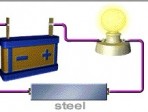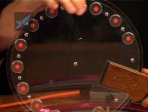 00:04:00
00:04:00
Electrical Generator
This short video shows one of the demonstrations for the Physics SEPNet exhibition - "Who will keep the lights on?" which travelled around the southern UK from February 2009. We describe and explain the electrical generator demonstration which Jona....
More details | Watch now 00:06:00
00:06:00
Fibre and Sunlight
Fine tuning the frequencies of light gave John Hall a Nobel Prize, and helped transform the fields of precision measurement and information transmission. Iris Choi and Andrei Ghicov are young scientists excited by the ways physics can change our worl....
More details | Watch now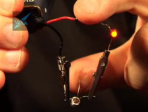 00:03:00
00:03:00
How does a transistor work?
A short video explaining how transistors work. At the heart of our high-tech society with radios, mobile phones, computers and space exploration are tiny electronic components called transistors. They have revolutionised electronics and in the pr....
More details | Watch now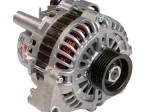 00:09:00
00:09:00
Magnetism and Electricity
This presentation reviews how magnets work and their uses in the world today. It also explains how magnets and electricity are related and what future inventions could come from using magnets.
More details | Watch now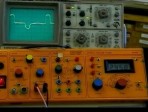 00:05:00
00:05:00
Measuring the speed of pulses
A short clip showing the experimental measurement of the speed of electrical pulses in a cable - a large fraction of the speed of light.
More details | Watch now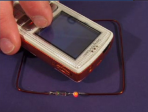 00:04:00
00:04:00
Mobile Phone
Jonathan shows us with a cheap and simple homemade demonstration how your mobile telephone generates radio waves in order for you to use it to communicate. As you will see you can use this method to explore many aspects of your mobile phone!
More details | Watch now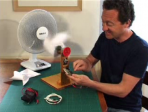 00:09:00
00:09:00
Paper Windmills
Jonathan makes some simple paper windmills/turbines and experiments with a simple generator to power house hold devices such as torches, calculators and even a radio.
More details | Watch now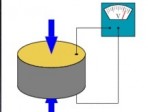 00:03:00
00:03:00
Piezoelectricity
Some minerals such as quartz can produce electricity simply by squeezing or bending them - these are called piezoelectric crystals. Here is a simple and cheap demonstration you can do.
More details | Watch now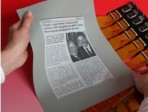 01:03:00
01:03:00
Plastic fantastic: electronics for the 21st century
Plastics - or, more correctly, polymers have traditionally been used by the electronics industry as passive materials. Now however, new types of polymers have been discovered which behave as semiconductors. For example, they can emit light when subje....
More details | Watch now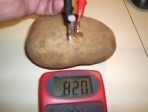 00:07:00
00:07:00
Potato Battery
When two different types of conductors are pushed into a potato chemical reactions take place charging them up - we have a simple electrochemical cell. A potato, zinc screw and carbon rod produce about 1V. We experiment joining a few of these cells u....
More details | Watch now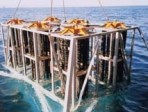 00:04:00
00:04:00
Seawater Battery
When two different metals are placed in a salt solution (an electrolyte) the chemistry produces a voltage. This is called a cell. By wiring up a number of these cells we can make a battery and use it to power electrical circuits.
More details | Watch now